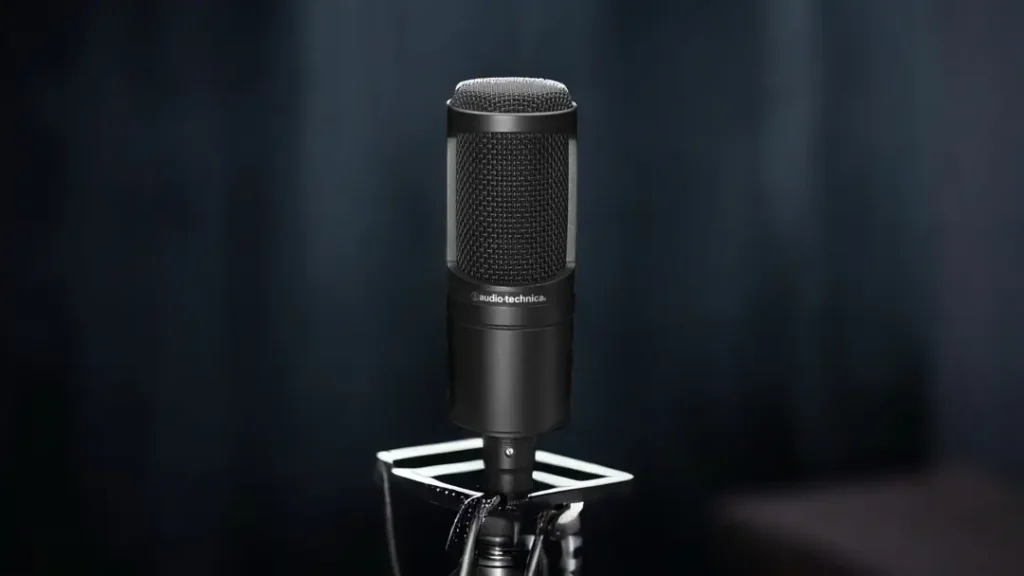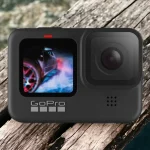The right microphone can make all the different in the world for vocalists, sound engineers and content creators. The vocal condenser microphone is well-known for its unmatched fidelity and sensitivity, and is available in various kinds. Moreover, the essential traits that differentiate a vocal condenser microphone from the ordinary ones and why it is the most suitable option especially for people involved in the sector will come forth in this article.

Key Features of Vocal Condenser Microphones
A capacitor microphone, commonly known as a condenser microphone, is frequently the go-to choice when it comes to recording vocals in the studio or during live shows due to the details and quality it provides. With that said, we explore the key factors that make the voice microphone shine and how exactly it highlights the element of a decent condenser microphone for the voice here:
- Diaphragm Size: Condenser microphones, which function similarly to dynamic microphones, come in a number of sizes – though the way in which they convert sound waves into electrical signals is fundamentally different. (LDCs) are best suited when it comes to vocals that are deep and rich, because their frequency response scores high on the low frequency end. You will find a higher level of accuracy with smaller-diaphragm condensers (SDCs) in capturing the natural sound of high frequency vocals. For each singer, taking into account their own vocal range and requirement, the diaphragm is the size is chosen to reach the desired audio quality.
- Sensitivity: The sensitivity of a condenser microphone is one of the most remarkable attributes it possesses-the measurement is usually expressed in decibels per volt (dBV) or decibels relative to 1 volt per pascal (dBVPa). The reason for this is fairly self-evident; a higher sensitivity results in drawings fewer margins for room errors – considering that the microphone can record what’s beneath it, it is capable of picking up more delicate aspects in the human voice, which generates a more accurate and natural sound. When it comes to capturing intimate vocal performances or recording in a noiseless environment, this particularly useful.
- Frequency Response: Microphone Frequency Response – The frequency response of a microphone is the range of frequencies that the microphone can accurately capture. Vocal condenser microphones are designed to have a flat frequency response, all frequency levels are recorded by a condenser microphone evenly. Others may feature minor tweaks to their frequency response, boosting certain ranges of a vocal or on the contrary compensating for room acoustics.
- Polar Patterns: Polar patterns refer to the type of sensitivity a microphone can have and how directional or unidirectional it can be. For vocal condenser microphones, the most popular polar patterns are-Cardioid, Supercardioid, and Omnidirectional. In these cases, a cardioid microphone is perfect for background noise rejection and for isolating the vocalist, while Supercardioid and omnidirection are great to increase the pickup range.

Superior Sensitivity and Wide Frequency Response
Superior sensitivity is one of the most important features provided by a vocal condenser microphone. The sensitivity lets the microphone capture unique voice characteristics and emotional nuances, so that the emotion and individuality of the voice is preserved. While providing a broad frequency response, such that full range vocal sounds from low bass notes to high soprano pitches are clearly known at high depths without loss of fidelity.
Cardioid Polar Pattern
A cardioid pattern is especially advantageous for vocals due to its sound capturing at the front of the microphone which eliminates noises from the sides and back. This helps isolate the vocals, especially in environments where there are a lot of other sounds competing, and/or rooms with lots of ambient noise.

High-Quality, Low-Noise Electronic Circuitry
The electronic components of a vocal condenser microphone play the most crucial role in maintaining the audio signal quality. The quality of the circuitry ensures a faithful reproduction with the minimum amount of electronic noise that could otherwise interfere with your clear sound recording.
Built-in Pop Filter
When we record vocals, plosives and sibilance are always a challenge to deal with and can result in a lot of pops and hisses. These problems are effectively neutralised by a built-in pop-filter which protects the microphone from plosive sounds (bursts of air from consonants), resulting in a clearer and more polished final performance.
Durable Construction
Even though studio equipment is often heavily used and sometimes mishandled, durability is a feature that is definitely required. This robust construction makes the microphone very well-suited to handling the rough and tumble of the studio or stage, ensuring hours of reliable use over its service life.
Wide Dynamic Range
Dynamic range refers to the difference between the quietest whispered verses and the bellowed choruses, while low distortion means that the microphone will not introduce any unwanted noise. Ideal for all types of musical genres, it has versatility in dealing with different vocal variations and dynamics.
Choosing Your Vocal Condenser Microphone
Choose the best vocal condenser microphone for your needs. For example, a studio engineer recording an acoustic singer-songwriter might not care about the same mic attributes as a rock vocalist singing live on stage.
Professional Musicians and Studio Engineers
In professional recording scenarios, a great microphone should deliver clean, clear sound reproduction, and do it every time with any advantages of signal quality loss. This is perfect and then you can start looking for certain specs like low self-noise and large-diaphragm models that can handle very high dynamic ranges.
Live Performers
But in a live setting, you really need durability and the ability to isolate vocals well in louder environments. A good strong build microphone featuring cardioid pattern, such internal shock mounting to reduce handling noise may helpful.
Content Creators
Convenience is also important to content creators due to their frequent use of DAWs and camera setups. For podcasting or stream usage, having practical features like the built-in pop filter and the capability of adapting to different speech dynamics can appeal to various users.
Why Choose a Vocal Condenser Microphone?
So we have seen turning points of vocal condenser microphones What are some of the reasons to pick with a reach-around?
- High sensitivity and precision: The sensitive response of a condenser microphone captures every little subtlety in voice, which is quite beneficial for a more clear and precise voice recording.
- Versatility: Vocal condenser microphones come in a variety of diaphragm sizes, polar patterns and frequency responses to better cater to your specific vocal style and application environment.
- Professional sound quality: Condenser Microphones (most of the time): Condenser mics are a type of microphone that most of the famous singers and content creators like to use as it gives you the best clarity and sound quality as compared to other types of microphones. These mics can pick up the warm rich tones that can smooth out any recording or live performance.
- Durability: Condenser microphones, fragile as they may be, have durability that can withstand a lifetime. A good quality vocal condenser microphone with the right care can stay with you for many years.
Conclusion
If you are recording detailed vocals, then a condenser microphone is a deserving investment. Taking into account sensitivity, frequency response, polar patterns, construction, circuitry, and dynamic range you will be able to find in the microphone that fulfills all your demands, in vocal recording and in live performance stages.
The correct microphone is the one between sound (the voice of the artist) and our ears (the fans) as well. Explore well enough for the best vocal condenser microphone for also honouring your voice and then the integrity of your art Form and safe, put your money.
Final Thoughts
The kit in which you record your vocals really matters, when it comes to recording vocals, what equipment you use will either make your performance or break it. Employing a vocal condenser microphone that is equipped with these crucial qualities is an essential companion for any content creator who takes the next step with their audio. From stacking harmonies in the latest studio to baring the truth on the live stage, it is your microphone that truly makes a difference.



